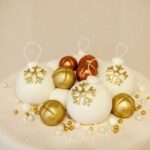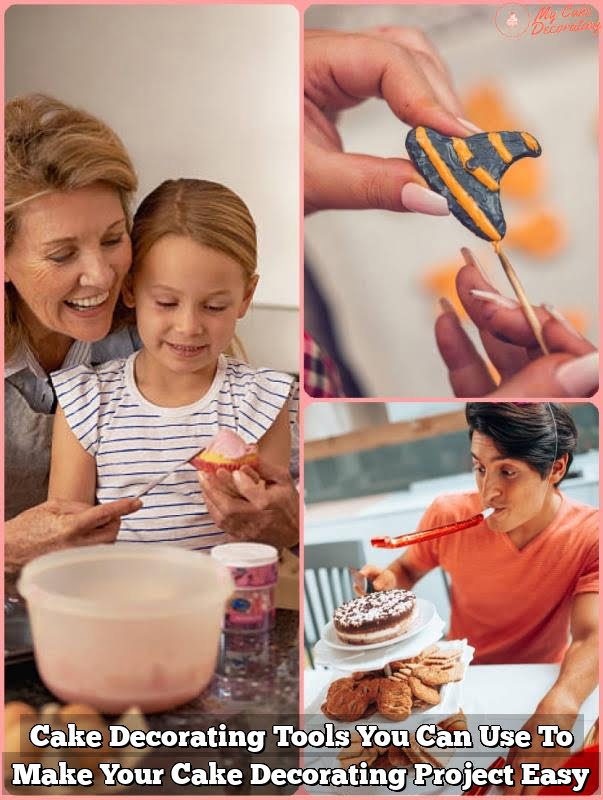Are you looking to enhance your cake decorating skills? If so, learning how to make meringue for cake decorating is essential. Meringue adds a beautiful and delicious decorative element to cakes, cupcakes, and other confections. By mastering the art of meringue, you can take your baking and decorating to the next level.
Meringue is a versatile and popular choice for cake decorating, but understanding the basics is crucial before diving into more complex techniques. From the different types of meringue to the necessary ingredients and step-by-step instructions, this guide will walk you through everything you need to know about making meringue for cake decorating.
In this article, we will explore the three main types of meringue – French, Italian, and Swiss – as well as the specific ingredients needed for making meringue. We’ll also provide a detailed step-by-step guide on how to make meringue and offer valuable tips and tricks for achieving perfect results every time.
So whether you’re a beginner or an experienced baker looking to refine your skills, this comprehensive guide will help you master the art of using meringue for cake decorating.
Types of Meringue
Meringue is a versatile and elegant topping that adds a fluffy, sweet touch to any dessert, including cake decorating. There are three main types of meringue: French, Italian, and Swiss. Each type has its own unique characteristics and uses, making it important to understand the differences between them when choosing the right meringue for your cake decorating.
French Meringue
French meringue is perhaps the most common type of meringue used in baking and cake decorating. It is made by whisking together egg whites and granulated sugar until stiff peaks form. This type of meringue is then typically piped onto cakes or pastries and baked until crisp on the outside while still soft on the inside.
Italian Meringue
Italian meringue involves creating a sugar syrup by boiling sugar and water to a specific temperature before pouring it onto whipped egg whites while beating continuously. The result is a stable and glossy meringue that can be used to decorate cakes as well as providing stability to mousses and soufflés.
Swiss Meringue
Swiss meringue is made by gently heating egg whites and sugar over a double boiler until the sugar dissolves, then whipping the mixture into stiff peaks. This method creates a smooth and stable meringue that can be used for cake decorating, filling macarons, or even making buttercream frosting.
Understanding the different types of meringues allows you to choose the best one for your specific cake decorating needs. Each type has its own distinct texture and application, so experimenting with all three varieties will help you master how to make meringue for cake decorating with confidence.
Ingredients Needed for Making Meringue
Meringue is a key component in cake decorating, adding a light and airy touch to any confection. In order to make meringue for cake decorating, you will need just a few simple ingredients. The main ingredients for making meringue include egg whites, sugar, and cream of tartar.
The egg whites act as the base of the meringue, providing the structure and stability needed to achieve the desired texture. Sugar is added to sweeten the meringue and give it that signature crispness on the outside while remaining soft and fluffy on the inside. Cream of tartar is often used as a stabilizer to help create a more voluminous and stable meringue.
It’s important to use fresh eggs when making meringue, as older eggs may not whip up as well due to their decreased protein content. Additionally, ensure that your mixing bowl and beaters are completely clean and free of any grease or residue, as this can prevent the egg whites from reaching their full volume.
| Ingredients | Quantity |
|---|---|
| Egg Whites | 3 large eggs (approximately 90g) |
| Sugar | 3/4 cup (150g) |
| Cream of Tartar | 1/2 teaspoon (2g) |
Step-by-Step Guide on How to Make Meringue
Meringue is a light and airy confection made from whipped egg whites and sugar, commonly used in cake decorating. Whether you’re making a classic French meringue or a more stable Italian meringue, the basic steps for making meringue remain the same. Here’s a step-by-step guide on how to make meringue for cake decorating:
- Start with clean and dry equipment: Before you begin, make sure that your mixing bowl and beaters are clean, dry, and free of any grease. Any trace of fat can prevent the egg whites from whipping up properly.
- Select the right egg whites: Use fresh eggs at room temperature for best results. Separate the egg yolks from the whites carefully to avoid any traces of yolks in the whites.
- Whip the egg whites: Place the egg whites in the mixing bowl and start beating them at a low speed until they become frothy. Once frothy, increase the speed to medium-high and continue beating until soft peaks form.
- Add sugar gradually: With the mixer running, gradually add in the sugar, one tablespoon at a time. Continue beating until stiff peaks form and the meringue is smooth, glossy, and holds its shape when the beaters are lifted.
- Use immediately or store properly: Meringue can be used immediately to decorate cakes or cookies. If not using right away, store it in an airtight container at room temperature for up to 24 hours or in the refrigerator for up to 3 days.
Now that you know how to make basic meringue, you can use it for various cake decorating techniques such as piping borders, creating rosettes or swirls, covering entire cakes with textured designs, and even making delicate flowers.
Whether you’re using French meringue for its light and crisp texture or Italian meringue for its stability and smoothness, mastering these step-by-step instructions will ensure that your cake decorating skills reach new heights with beautifully crafted meringue decorations.
In addition to enhancing your cakes with visually stunning designs, understanding how to make meringue for cake decorating allows you to unleash your creativity by experimenting with different colors and flavorings that can be added to your meringue mixture. With practice and patience, you’ll soon be wowing friends and family with your impeccable cake decorating skills.
Tips and Tricks for Perfect Meringue
Meringue is a light, airy and sweet mixture that can be used in a variety of ways in baking, including as a topping for pies and as a decoration for cakes. To achieve the perfect meringue for cake decorating, it is essential to master some tips and tricks to ensure that your meringue turns out just right.
First and foremost, it is important to ensure that you are using fresh egg whites at room temperature when making meringue. Egg whites that are too cold will not whip up properly, while those that are too old may result in a weak or unstable meringue. Additionally, make sure that all of your equipment is clean and grease-free, as any trace of fat can prevent the egg whites from whipping up into meringue.
When adding sugar to your meringue mixture, do so gradually. Adding the sugar slowly will allow it to dissolve evenly into the egg whites, resulting in a stable and glossy meringue. It is also helpful to add cream of tartar or lemon juice to the egg whites while beating them, as this helps to stabilize the mixture and create a more voluminous meringue.
In terms of baking the meringue for cake decorating, be sure to spread it onto the cake while it is still warm. This will help the meringue adhere to the cake better. Once decorated, use a kitchen torch to lightly brown the edges of the meringue for an extra touch of flavor and visual appeal. By following these tips and tricks, you can create stunning and delicious meringue decorations for your cakes with confidence.
Using Meringue for Cake Decorating
Meringue is not only a delicious treat on its own, but it can also be used to decorate cakes and add a touch of elegance to any dessert. There are several techniques and ideas for using meringue to decorate cakes, and with a little practice, you can create stunning designs that will impress your friends and family.
Here are some popular techniques for using meringue for cake decorating:
- Piping: One of the most common ways to use meringue for cake decorating is by piping it onto the cake using a pastry bag fitted with various tips. This allows you to create intricate designs such as flowers, borders, or even writing on the cake.
- Meringue Kisses: Another fun way to use meringue for cake decorating is by making meringue kisses. These small dollops of meringue can be spread across the top of a cake or used to create a whimsical border around the edges.
- Toasted Meringue: For a more sophisticated look, consider using a torch to lightly toast the meringue after piping it onto the cake. This not only adds a beautiful golden color but also gives the meringue a delicious caramelized flavor.
In addition to these techniques, there are countless ideas for using meringue to decorate cakes. From creating elaborate designs on layer cakes to adding simple accents on cupcakes, the possibilities are endless when it comes to using meringue for cake decorating. With some creativity and practice, you can elevate any dessert with beautiful and delicious meringue decorations.
Troubleshooting Common Meringue Problems
Overbeaten Meringue
If your meringue turns grainy or starts to weep after being piped onto your cake, it may have been overbeaten. Overbeating can cause the proteins in the egg whites to become too stiff and lose their ability to hold air, resulting in a dry and crumbly texture.
To prevent this, make sure to beat the egg whites just until they reach stiff peaks. If you notice that your meringue has been overbeaten, try salvaging it by gently folding in a small amount of fresh egg whites.
Weeping Meringue
If you find that your meringue is losing moisture and forming beads of liquid on top of your cake, it may be due to underbaking. Weeping meringue occurs when the sugar in the meringue syrup is not fully dissolved during the cooking process, causing excess moisture to seep out as the meringue sits.
To avoid this issue, make sure that the sugar is completely dissolved when making the meringue syrup and that the meringue is baked until golden brown and set.
Flat or Deflated Meringue
A flat or deflated meringue can be caused by underwhipping the egg whites or using old egg whites with reduced protein quality. To ensure a stable and fluffy meringue, use fresh eggs at room temperature and whip them until they form stiff peaks.
Additionally, make sure that all equipment used for making meringue is clean and free of any grease or residue, as this can also cause deflation. If your meringue does deflate, try sprinkling a small amount of cream of tartar and gently re-whipping to stabilize it.
By troubleshooting these common meringue problems, you can ensure that your cake decorating endeavors are met with success and beautiful results. Understanding how to adjust for overbeaten or weeping meringues will allow you to confidently create stunning decorations for your cakes without worry.
Conclusion
In conclusion, mastering the art of making meringue for cake decorating can truly elevate your baking game. Whether you choose to use French, Italian, or Swiss meringue, understanding the basics and following a step-by-step guide is essential to achieving perfect results. With the right ingredients and techniques at hand, you can create beautifully decorated cakes that are sure to impress your family and friends.
By incorporating meringue into your cake decorating repertoire, you open up a world of creative possibilities. From pipeable rosettes and swirls to delicate peaks and shapes, meringue offers a versatile medium for adding texture, flavor, and visual appeal to your baked creations. Whether you’re aiming for a classic look or something more contemporary, mastering the use of meringue for cake decorating will allow you to bring your artistic visions to life.
As with any new skill, practice makes perfect when it comes to using meringue for cake decorating. Don’t be discouraged by common problems such as overbeating or weeping – troubleshoot these issues using the tips and tricks provided, and keep experimenting until you achieve the desired results. With patience and perseverance, you too can become adept at creating stunning meringue decorations that will take your cakes from ordinary to extraordinary.
Frequently Asked Questions
Which Meringue Is Best for Piping?
The best meringue for piping is a stiff and stable one, made by beating the egg whites and sugar until they form stiff peaks. This type of meringue will hold its shape when piped onto a baking sheet or cake.
Will Meringues Go Soft on a Cake?
Meringues can go soft on a cake if they are exposed to moisture for too long. To prevent this, it’s best to add the meringues to the cake just before serving. If you need to store a cake with meringue on top, keep it in an airtight container in the refrigerator.
What Is the Trick to Making Meringue?
The trick to making perfect meringue is to ensure that all equipment used is clean and free from any traces of grease or fat. Additionally, adding sugar gradually to the egg whites and using cream of tartar can help stabilize the meringue and prevent it from deflating.

Welcome to my blog about home and family. This blog is a place where I will share my thoughts, ideas, and experiences related to these important topics. I am a stay-at-home mom with two young children. I hope you enjoy reading it! and may find some helpful tips and ideas that will make your home and family life even better!





